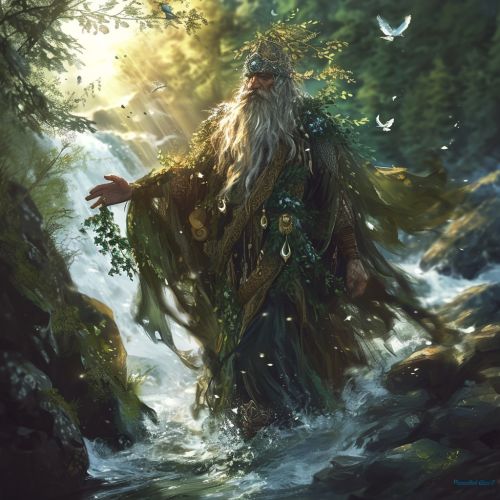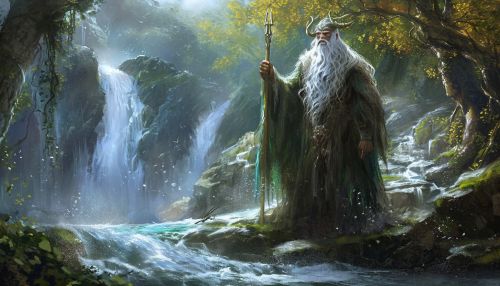Veles (god)
Overview
Veles is a major deity in Slavic mythology, associated with earth, waters, forests, and the underworld. His role in the pantheon of Slavic gods and goddesses varies by region and historical period, but he is generally recognized as a god of earth, water, and the underworld. He is often contrasted with Perun, the thunder god, in a dichotomy similar to that seen in many other mythologies.


Etymology
The name "Veles" is believed to derive from the Proto-Slavic root *vel-, meaning "dead" or "underworld." This root is also found in other Slavic languages, such as Russian волхв (volkhv, "sorcerer") and Polish wółk, "prophet." The name has been interpreted as "the one who leads the souls of the dead," reflecting Veles' role as a psychopomp.
Attributes and Symbols
Veles is often depicted as a horned god, reflecting his association with cattle and wealth. He is also frequently represented as a bear, a symbol of his connection to the earth and the underworld. Other common symbols associated with Veles include the snake, the dragon, and the willow tree. These symbols reflect his role as a god of water and the underworld, as well as his function as a protector of the community.
Role in Slavic Mythology
In Slavic mythology, Veles is one of the two most powerful gods, along with Perun. The two deities are often portrayed in opposition, with Perun as the god of the sky and thunder, and Veles as the god of the earth and the underworld. This dichotomy is similar to that seen in many other mythologies, such as the Greek opposition between Zeus and Hades, or the Norse opposition between Odin and Hel.
Veles is also associated with magic and trickery, and he is often portrayed as a shapeshifter. This aspect of his character is reflected in his role as a protector of the community, as he uses his powers to deceive and trick enemies.
Worship and Rituals
The worship of Veles was widespread among the Slavic peoples. He was venerated as a god of wealth and prosperity, and his symbols were often used in rituals aimed at ensuring a good harvest or protecting cattle. In some regions, he was also worshipped as a god of the underworld, and rituals were performed in his honor to ensure the safe passage of the dead.
Legacy
The legacy of Veles can be seen in various aspects of Slavic culture. His name is preserved in many place names throughout Eastern Europe, and his symbols continue to be used in folk art and traditional crafts. The dichotomy between Veles and Perun has also influenced the development of Slavic literature and folklore, and it continues to be a significant theme in contemporary Slavic paganism.
